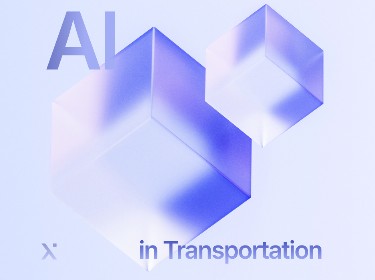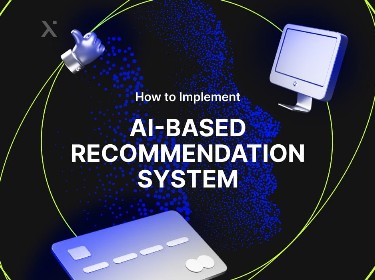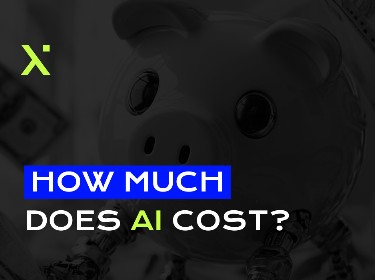The trade sector is growing more and more competitive with each day, making businesses search for new ways to boost the efficiency of their supply chain processes. Can predictive analytics help?
A reliable supply chain that runs like clockwork is a must in the highly competitive world of commerce. Even minor errors can affect the whole supply line, leading to customer dissatisfaction and impairing your business reputation.
That’s why many businesses have started to adopt predictive analytics to upgrade their supply chain management and run it in a much more intelligent and thought-out manner. According to statistics, the market size of predictive analytics is estimated to reach $38 billion by 2028.
Predictive analytics in supply chain software development leverages big data, IoT, robotics, and AI to predict business effectiveness and provide actionable insights on performance and upgrades.
Read on to understand how exactly your business can implement predictive analytics services in supply chain, what benefits it unlocks, and how to use it to your advantage.
What are the benefits of applying predictive analytics in supply chain?
![]()
There are multiple benefits of leveraging predictive analytics in supply chain, including:
- Faster data processing — supply chains accumulate huge amounts of data from sales details, invoices, delivery notes, customs documents, etc. which would take innumerable hours to process manually. A solution backed by predictive analytics can handle it in a matter of minutes.
- Increased supply chain strategy effectiveness — when a business is aware of its supply chain strengths, weaknesses, and potential risks, it has a solid ground on which to build an effective strategy.
- Improved resource management — predictive analytics helps to distribute resources and workforce more intelligently, focusing effort where it is really needed.
- Effective risk prediction — with risk forecasts derived from predictive analytics, companies can get ready to manage, or avoid completely, supply chain risks.
- Competitive edge — insights backed by predictive analytics data can help you stay a step ahead of your competitors and achieve much better results.
Learn more about digital transformation in supply chain
What use cases of predictive analytics in supply chain are there?
Predictive analytics enhances multiple aspects of the supply chain, the most vital of which are logistics, customer experience, demand forecasting, and predictive maintenance. Let’s take a closer look at each of them.
![]()
Logistics
A thriving business must have well-established and reliable logistics that allows it to deliver goods exactly on time and to the right place. As well as customer delivery, it must be equally precise with transporting the resources needed for manufacturing, and bringing them to the company’s facilities safe and sound and at the predetermined time.
Usually goods and materials have to travel through different locations, often several countries, to reach their final destination. Numerous arrangements need to be made, such as customs requirements, transportation management, and special handling of goods like temperature or humidity level.
Predictive analytics analyzes different types of data including weather conditions, traffic, countries legislation and regulations, and other aspects to make a comprehensive logistics report. With this information, specialists can work out the most rational routes and prepare the necessary documents and payments in advance.
This way, the shipment process goes smoothly, allowing companies to offer customers best delivery terms and guaranteeing safety and integrity of goods.
World-famous Chinese eCommerce platform Alibaba is one of the businesses which have leveraged predictive analytics models to streamline its logistics operations. Alibaba has IoT-powered tracking devices attached to their goods and shipment vehicles, collecting vital details on transportation processes. Predictive analytics models then use it to create optimal routes. This is a prime example of how IoT services for the supply chain industry can generate the real-time data needed for accurate predictions and optimized logistics.
Get acquainted with Scargos — an advanced logistics solution connecting shippers, carriers, and drivers
Customer experience
By processing how customers interact with a company’s online and physical stores and defining repetitive patterns, predictive analytics models help businesses better understand customer preferences and behavior. This allows them to make highly personalized offers and discounts, encouraging customers to buy additional products and spend more time shopping.
The world’s largest fast-food chain, McDonald’s, has embraced predictive analytics to upgrade several aspects of its customer experience. First, it helps the company to predict when large numbers of drive-thru customers are likely to show up. Long waiting times can significantly affect customers’ mood, and their likelihood of returning next time, so McDonalds proactively tackles this issue by ensuring that more staff are on the shift ready to process orders within a couple of minutes.
Second, McDonalds uses predictive analytics to tailor its menu to weather conditions, time of day, holidays, and local events. For example, hot drinks will be displayed first on the menu when it is cold outside. Similarly, mobile development services for the supply chain industry can leverage predictive analytics to personalize delivery routes, optimize warehouse picking processes, and even predict potential disruptions in real-time, enhancing the overall customer experience.
Demand forecasting
If there are no available goods at the location where people crave them most, while a huge pile of it accumulates dust someplace where customers show zero interest, the result will be great financial loss.
Knowing what products will be in demand in this or that location significantly improves data insights, enabling businesses to distribute their stocks appropriately and cater exactly to customers’ needs. Therefore, turning to expert business intelligence consulting team is strongly recommended. Predictive analytics in supply chain can foresee such spikes of interest by processing data from previous years and analyzing upcoming events like a change of season or holidays.
Retail giant Amazon uses predictive analytics to forecast what items its customers are most likely to buy in a given region and at a given time. This allows Amazon to keep a pre-assembled stock, tailored exactly to customer demand, and maintain same day delivery. IT consulting services for the supply chain industry can help businesses implement similar predictive models, optimizing inventory management, reducing waste, and improving overall efficiency.
Predictive maintenance
Predictive analytics can also be applied to tracking machinery performance, enabling businesses to avoid sudden outages and downtime. Based on the history of past malfunctions and current performance metrics, you can plan maintenance works in advance and schedule it for a time when the machinery will not be in high demand.
Nestlé, a multinational food and drink processing corporation, relies on predictive maintenance to avoid downtime, mitigate safety, and optimize electrical loads, to make their production facilities more energy efficient. Nestlé’s predictive analytics models gather data from the cloud and smart devices integrated with factory equipment, conduct a thorough analysis, provide insights into equipment health, and suggest predictive maintenance schedules. Enterprise development services for the supply chain industry can build custom software solutions that integrate predictive maintenance models with existing ERP systems, allowing for seamless data flow and proactive decision-making.
Meet Blockverify — blockchain-based supply chain and anti-counterfeit solution
What are the challenges your business may face when implementing predictive analytics in the supply chain?
When planning to introduce predictive analytics in supply chain management, be aware of several challenges you may face:
- Lack of historical data — predictive analytics models require large amounts of historical data to work effectively, but not all companies collect and store it properly. So it may be that before implementing predictive analytics, you will need to collect relevant information about your business processes.
- Insufficient understanding of all processes — often digital solutions used by businesses are not integrated with each other, meaning that the data they collect is siloed and does not contribute to an understanding of supply chain processes as a whole. If that’s the case with your company, you should ensure interconnection of all business systems to get a 360° picture of your workflow.
- Lack of specialists — it’s rather difficult to hire highly-skilled specialists in predictive analytics since it is a relatively new approach requiring a deep understanding of AI, ML, IoT, and related technologies.
- Upgrade expenditures — implementing predictive analytics in supply chain will come with expenses on new software (ex. AI and ML modules), and hardware (ex. IoT sensors). Also, you will need to hire specialists in data science and related areas, or provide relevant training for your employees.
How can your business implement predictive analytics in the supply chain in 4 steps?
![]()
There are four steps you should take to maximize the capabilities of predictive analytics and boost your supply chain performance. These include:
Step 1. Define areas for improvement
Analyze how effective your supply chain is and identify what aspects need improvement or alteration.
Step 2. Gather and sort the data
Connect all the sources of information you have on your supply chain and ensure that it’s properly classified and stored. All information needs to be standardized so that it can be effortlessly processed.
Step 3. Build predictive analytics models
Apply AI and ML best practices to create advanced predictive analytics models for your supply chain. To make sure it suits your business needs perfectly, we recommend you turn to experienced developers with a comprehensive portfolio of AI-based solutions.
Step 4. Integrate predictive analytics models into supply chain workflow
Convey the importance of insights derived from predictive analytics to your team, and especially the managers who will be responsible for putting these guidelines into action. The sooner the predictive analytics solution becomes an integral part of your supply chain management system, the sooner your business will enjoy game-changing results.
Conclusion
Predictive analytics in supply chain will enable you to cast aside guesses and assumptions, and make well-informed decisions based on accurate and reliable data. So it is a must-have for businesses aiming to deliver the best customer service, streamline logistics, and boost production performance with predictive equipment maintenance.
Ready to upgrade your supply chain management with predictive analytics? Feel free to contact us. Our data analytics experts will gladly consult you on any questions you may have about implementing predictive analytics, and help map out a strategy of applying it to your supply chain.




